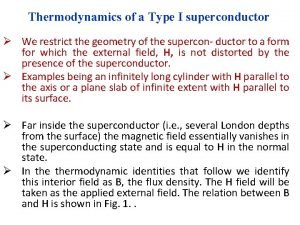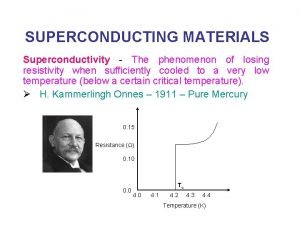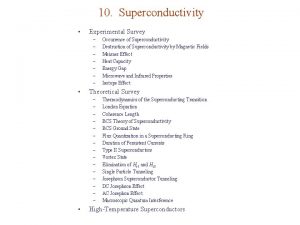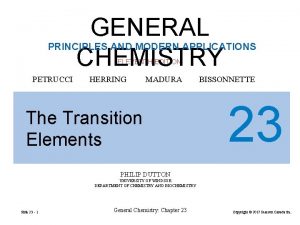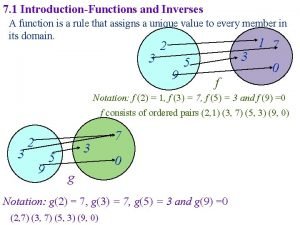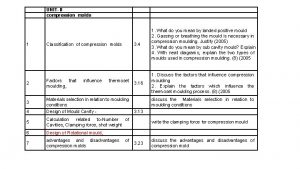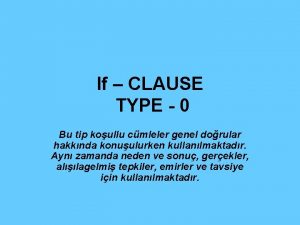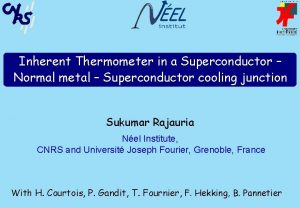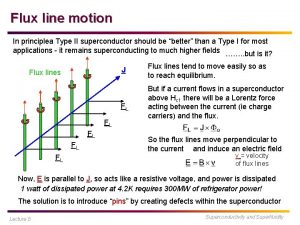Thermodynamics of a Type I superconductor We restrict



















- Slides: 19

Thermodynamics of a Type I superconductor Ø We restrict the geometry of the supercon- ductor to a form for which the external field, H, is not distorted by the presence of the superconductor. Ø Examples being an infinitely long cylinder with H parallel to the axis or a plane slab of infinite extent with H parallel to its surface. Ø Far inside the superconductor (i. e. , several London depths from the surface) the magnetic field essentially vanishes in the superconducting state and is equal to H in the normal state. Ø In thermodynamic identities that follow we identify this interior field as B, the flux density. The H field will be taken as the applied external field. The relation between B and H is shown in Fig. 1. .

Thermodynamics of a Type I superconductor Ø We recall thermodynamic identity for the response of a system in a magnetic field Figure. 1 B vs H curve for a Type 1 superconductor.

Thermodynamics of a Type I superconductor Ø When T and B are the independent variables we use the Helmholtz free energy density, and when T and H are the independent variables we use the Gibbs free energy density, taking the differential of these two quantities and using (1) yields

Thermodynamics of a Type I superconductor Ø

Thermodynamics of a Type I superconductor Ø






The intermediate state Ø If a superconducting body of an arbitrary shape is placed in a magnetic field, the flux the magnetic field. Exceptions are an infinite cylinder with the field parallel to the axis, or a sheet or half space with H 0 parallel to the plane of symmetry. Ø For situations involving lower symmetry the local magnetic field can vary over the surface, being both higher and lower than the applied field, Ho. Ø As a simple example consider the case of a spherical superconductor shown in Fig. 5. 1. From magnetostatics, the field will be highest at the equator (on the circle C in Fig. 5. 1) where it is. Hence flux enters the sample, not at thermodynamic critical field, Hc, but at a value For magnetic fields Ø Hc > H 0 > 2/3 Hc the sample consists of alternating domains of normal metal and superconductor. A superconductor in such a regime is said to be in the intermediate state.



The intermediate state Ø We will limit our discussion to the simple case of a plane superconducting sheet with H 0 parallel to the surface normal. Ø From our earlier discussion we know that a superconductor cannot sustain a field component perpendicular to its surface. The field behavior is shown qualitatively in Fig. 5. 2. It has the following features.


Surface energy between a normal and a superconducting metal Ø Consider a slab parallel to the x-y plane in a perpendicular magnetic field parallel to z. Assume we have a phase boundary perpendicular to the x axis with the superconductor occupying the region x > 0. The total free energy, F, in the London model is: Ø Ø (6. 1) Where is the interface area, is the condensation energy density, , and the second and third terms are the magnetic field energy density and the super fluid electron-kinetic energy density, respectively.

Surface energy between a normal and a superconducting metal Ø At our phase boundary in the intermediate state, where H = Hc for x < 0, we have Ø (6. 2) Ø (6. 3)

Surface energy between a normal and a superconducting metal Ø

Surface energy between a normal and a superconducting metal Ø Note this surface energy is negative. This suggests the system can the interfacial area (i. e. , the system is unstable to the formation of multiple domains with associated interfaces). lower its energy by maximizing
 Superconductor examples
Superconductor examples Superconductivity
Superconductivity Define the survey of superconductor
Define the survey of superconductor Superconductor
Superconductor Superconductor
Superconductor To avoid nulls, some designers use special codes, known as
To avoid nulls, some designers use special codes, known as R/notrap
R/notrap Onychatrophia contraindications
Onychatrophia contraindications Chapter 5 bonds bond valuation and interest rates solutions
Chapter 5 bonds bond valuation and interest rates solutions Derivative of hyperbolic functions
Derivative of hyperbolic functions Narrow band theory in sport
Narrow band theory in sport How can one type of rock change into another type of rock?
How can one type of rock change into another type of rock? Importance of groundnut
Importance of groundnut Semi positive compression mould
Semi positive compression mould Type 0 type 1
Type 0 type 1 Order of recruitment of muscle fiber types
Order of recruitment of muscle fiber types Reference type and value type
Reference type and value type Blood type offspring
Blood type offspring Sublimation defense mechanism
Sublimation defense mechanism Type c personality
Type c personality
